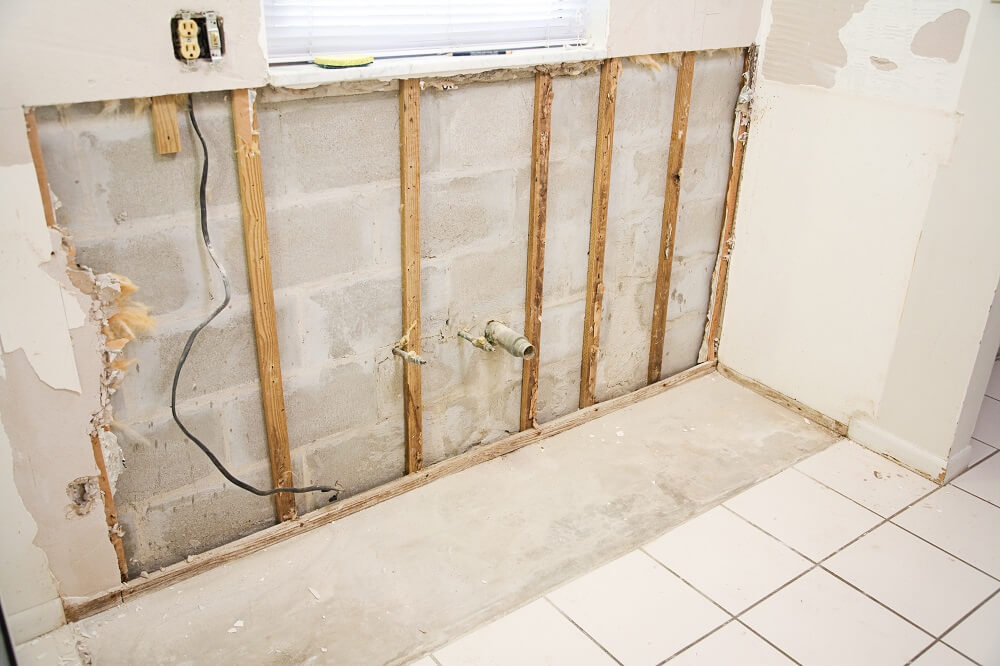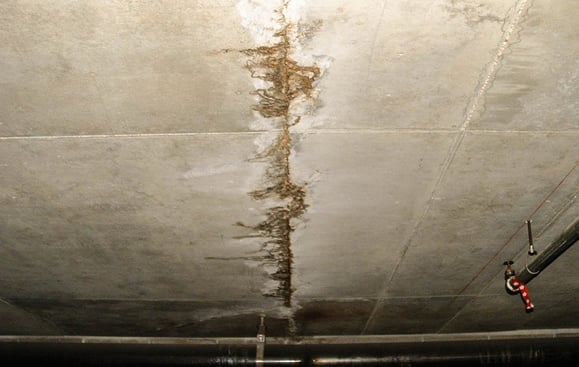Top Water Mitigation Company for Fast Response and Quality Service
Top Water Mitigation Company for Fast Response and Quality Service
Blog Article
The Process of Water Damage Cleaning: Ensuring Your Home Is Restored Successfully
Water damage can be a complicated difficulty for house owners, demanding a organized and careful cleanup process to restore safety and security and functionality. A comprehensive evaluation is important to determine the level of the damages and identify the proper remediation steps. Following this, reliable water removal strategies play an essential role in minimizing additional injury. However, the nuances of drying, sterilizing, and ultimate restoration are equally necessary and usually ignored. Comprehending these stages can make a considerable difference in the result of your home's restoration, triggering a closer take a look at what each action entails.
Assessing the Damage
Upon uncovering water damage, the initial step is to thoroughly examine the degree of the impact. This preliminary analysis is essential, as it aids identify the essential actions for reliable clean-up and reconstruction. Begin by examining the affected areas, consisting of walls, ceilings, floorings, and personal possessions, to determine the resource of the water invasion, whether from flooding, leaks, or condensation.
Recording the damage is essential for both insurance coverage claims and intending restoration initiatives - damage restoration services. Use photographs and composed notes to capture the seriousness of the damages, keeping in mind any type of affected architectural components and products. Pay special focus to areas that may not be instantly visible, such as behind wall surfaces and under rugs, as hidden wetness can bring about further complications, consisting of mold growth
Furthermore, assess the timeline of the water direct exposure. Inevitably, a detailed assessment lays the groundwork for a successful water damages cleaning procedure, ensuring that all impacted areas are addressed successfully and thoroughly.
Water Extraction Methods

Professionals usually utilize completely submersible pumps for larger volumes of water, which can promptly alleviate flooding in cellars or other influenced areas. For smaller sized quantities, wet/dry vacuum cleaners are typically used to remove recurring wetness from carpets and tough surfaces. In addition, utilizing mobile extractors enables for targeted elimination in constrained spaces or locations with fragile materials.
In circumstances of contaminated water, such as sewer or floodwater, advanced extraction techniques may involve making use of biohazard devices to ensure safety and compliance with wellness guidelines. High-powered extraction tools are vital in minimizing water retention in architectural materials, which can result in mold and mildew development and structural degeneration if not resolved without delay.
Ultimately, the performance of water removal methods plays a crucial function in the general success of the water damage cleanup procedure, laying the groundwork for subsequent reconstruction initiatives.
Drying and Dehumidification
As soon as standing water has been efficiently removed, the next important stage in the water damage cleanup process is drying out and dehumidification. This step is important to stop additional damage and mold and mildew growth, which can occur within 24 to two days in wet environments.
To attain effective drying, specific devices such as industrial-grade air movers and dehumidifiers is utilized. Air moving companies circulate air across wet surfaces, boosting dissipation prices, while dehumidifiers minimize moisture degrees in the air, promoting a helpful setting for drying. The mix of these tools ensures that moisture is drawn out from floors, walls, and home furnishings, allowing them to dry completely.
It is necessary to keep an eye on the drying out process very closely. Experts usually use wetness meters to evaluate the moisture content in various materials, making sure that all affected locations reach appropriate dry skin levels. This precise method helps to stop surprise moisture pockets that can result in structural damage or undesirable mold and mildew development.

Cleaning and Sanitizing
After the drying and dehumidification phase is complete, the following crucial step in water damages clean-up is cleaning and disinfecting the impacted locations. This procedure is essential to stop the development of mold, bacteria, and other pathogens that prosper in damp environments.
The cleansing stage usually includes getting rid of any particles, dirt, and contaminants from surface areas utilizing specialized cleaning agents. For tough surface areas, a combination of soap and water or business cleansing items is commonly employed. Soft materials, such as furniture and rugs, might call for more considerable cleansing approaches, including vapor cleaning or deep extraction strategies, to guarantee thorough sanitation.

Sterilizing follows cleaning, utilizing EPA-approved disinfectants to get rid of harmful bacteria. This step is crucial, especially in areas that may have entered contact with floodwaters or sewage, as these sources can present significant health and wellness threats.
In addition, it is very important to address any kind of continuing to be odors, which might call for using odor neutralizers or sophisticated strategies like ozone therapy. Correct cleansing and sterilizing not only restore the safety and hygiene of your home however likewise lay the foundation for effective repair and repair services in subsequent phases of the water damages cleanup procedure.
Reconstruction and Repairs

As soon as the evaluation is total, restoration initiatives can start. This typically entails repairing or replacing broken materials, ensuring that all work abides by neighborhood building regulations and standards. For instance, if drywall has actually been jeopardized, it will certainly require to be gotten rid of and changed with new material. Furthermore, flooring might call for comparable interest, depending on the level of water direct exposure.
It is critical to involve skilled remediation professionals during this procedure, as they possess the competence to deal with complex repair services effectively. They can aid minimize prospective future issues, such as mold and mildew growth or structural instability, hence making i loved this sure a habitable and risk-free living environment. Inevitably, efficient repair and repair services recover the home's integrity and improve its water leak insurance general value.
Conclusion
In verdict, the procedure of water damage cleaning is crucial for restoring a home to its pre-damage problem. Each stage, from analyzing the damage to carrying out efficient water extraction strategies, complied with by complete drying out, sterilizing, and needed repair services, plays a necessary role in guaranteeing security and conformity with structure standards. Effective implementation of these actions not only reduces prompt damages yet also improves the lasting integrity and value of the residential or commercial property.
Water damages can be a daunting challenge for homeowners, necessitating a structured and meticulous cleaning procedure to bring back safety and security and performance. Inevitably, an extensive evaluation lays the foundation for an effective water damage cleanup procedure, making certain that all influenced locations are dealt with effectively and thoroughly.
Reliable water extraction methods are vital in reducing damage and protecting against additional problems adhering to a water invasion occasion.In conclusion, the procedure of water damage cleanup is critical for bring back a home to its pre-damage condition. Each stage, from evaluating the damages to applying effective water removal techniques, adhered to by comprehensive drying, sterilizing, and necessary fixings, plays a crucial duty in making sure safety and compliance with structure criteria.
Report this page